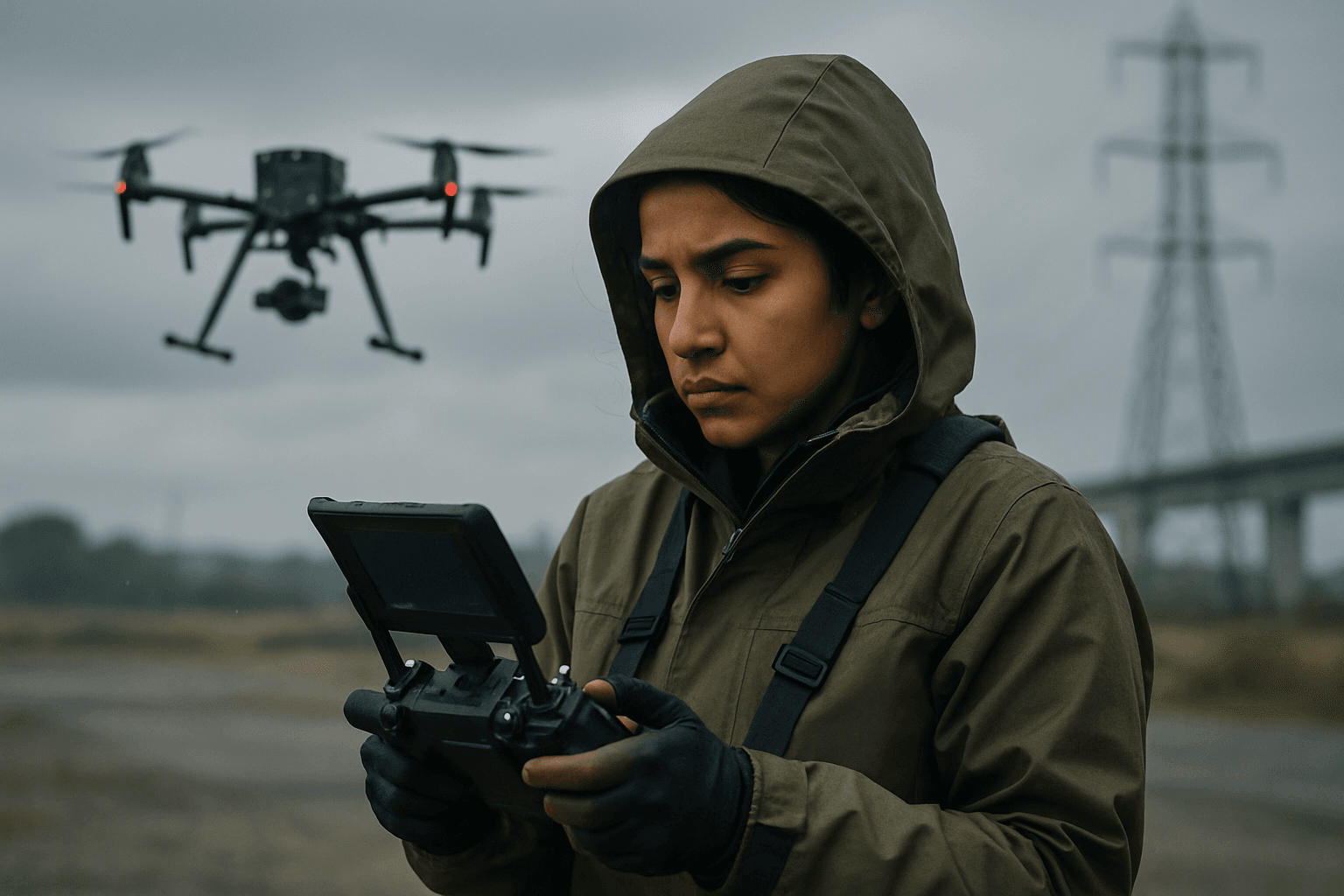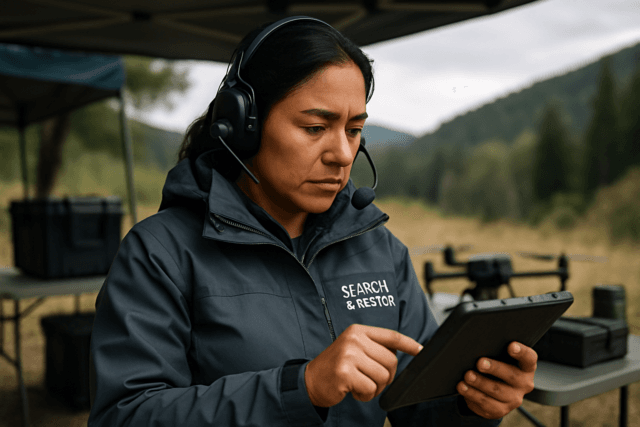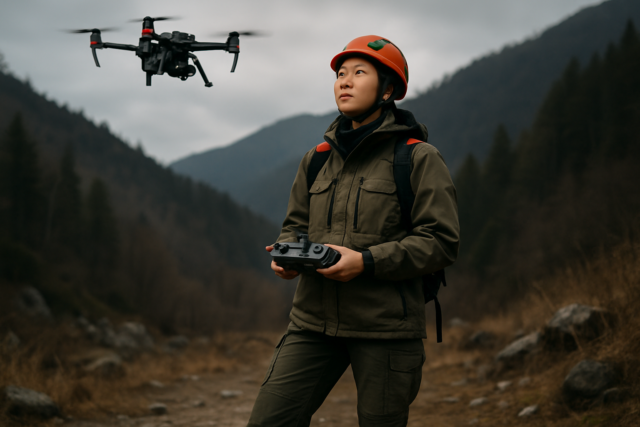Drones have revolutionized infrastructure inspections, offering unparalleled efficiency, safety, and access to difficult-to-reach areas. From bridges and pipelines to wind turbines and power lines, Unmanned Aerial Vehicles (UAVs) provide high-resolution data for condition assessment, maintenance planning, and progress monitoring. However, the precision and reliability of these aerial surveys are heavily influenced by a critical, often unpredictable factor: weather. Understanding how various meteorological conditions affect drone performance and data acquisition is paramount for successful and safe operations.
The Promise of Drones in Infrastructure Inspection
Traditional infrastructure inspection methods often involve significant risks to human workers, costly equipment, and extensive time commitments. Drones mitigate many of these challenges by providing a safer, faster, and more cost-effective alternative. Equipped with advanced cameras, thermal imagers, LiDAR, and other sensors, UAVs can capture detailed visual and thermal data, detect defects, identify abnormalities, and monitor changes over time with impressive accuracy. This capability is transforming industries like energy, construction, and agriculture.
Key Weather Conditions Affecting Drone Surveys
Despite their advanced capabilities, drones remain susceptible to environmental elements. Weather conditions can impact flight stability, battery life, sensor performance, and overall data quality, potentially leading to inaccurate results or even equipment loss.
Wind Speed and Direction
Wind is arguably the most significant weather factor influencing drone operations.
- Stability and Control: Strong winds can cause drones to drift off course, making it difficult to maintain stability and control, and can even lead to crashes. Wind shear—sudden changes in wind speed or direction—is particularly dangerous, causing abrupt shifts in position and making automated flight paths challenging.
- Data Accuracy: Wind can compromise the accuracy of collected data, leading to blurred or distorted images, and inconsistent ground sampling distance (GSD) due to altitude fluctuations. Studies have shown that increased wind speeds can reduce canopy height estimates in photogrammetric surveys.
- Battery Life: Drones flying against headwinds or in gusty conditions must expend more energy to maintain course and speed, leading to faster battery depletion and reduced flight times.
- Planning: Pilots often monitor wind speed and direction weeks in advance and plan flight paths perpendicular to the wind for maximum stability and accuracy. Wind speeds generally increase with altitude, so ground-level forecasts may underestimate the conditions a drone will encounter. Most drones have a maximum recommended wind speed that should not be exceeded.
Precipitation (Rain, Snow, Hail)
Moisture in any form poses serious threats to drones and data integrity.
- Electronic Damage: Most commercial and recreational drones are not waterproof, making sensitive electronic components vulnerable to water damage, short circuits, corrosion, or even complete system failure in rain or snow.
- Visibility and Sensor Interference: Raindrops and snowflakes can obstruct camera lenses, reducing image quality and making aerial imaging ineffective. They can also interfere with sensors like LiDAR and ultrasonic detectors, compromising obstacle avoidance and navigation capabilities.
- Aerodynamics: Precipitation can affect a drone’s aerodynamics, reducing lift and increasing drag, making flight more difficult and less efficient. Snow accumulation on propellers and cameras can also lead to dangerous situations and equipment malfunction.
Temperature Extremes (Hot and Cold)
Both excessively hot and cold temperatures can significantly impact drone performance.
- Battery Performance: Lithium-polymer (LiPo) batteries, common in drones, are highly susceptible to temperature fluctuations. Cold weather slows chemical reactions, increasing internal resistance, which leads to faster discharge, reduced capacity (up to 30% less at 0°C compared to 21°C), and shorter flight times. High temperatures quicken chemical processes, also shortening flight durations and potentially causing batteries to overheat, expand, or fail.
- Component Integrity: Extreme cold can make drone materials brittle, while high heat can cause components to overheat, melt wires, or lead to malfunctions or system shutdowns.
- Air Density: Hot air is less dense, requiring propellers and motors to work harder to maintain lift, which consumes more power and can shorten flight time.
Fog and Visibility
Fog, mist, and dense cloud cover significantly reduce visibility, posing multiple hazards.
- Visual Line of Sight (VLOS): Regulatory bodies often require drone operators to maintain VLOS, which fog severely impairs, increasing the risk of collisions with obstacles, other aircraft, or terrain.
- Sensor Efficacy: Fog can reduce the effectiveness of visual sensors and cameras, leading to compromised data collection and potential navigation errors. It can also interfere with GPS signals, causing delays or inaccuracies in positioning data.
- Moisture Damage: Fog consists of tiny water droplets, and prolonged exposure can lead to moisture ingress, damaging sensitive electronic components.
- Power Consumption: Dense, moisture-laden air in foggy conditions can require drones to use more power to maintain flight stability.
Lightning and Thunderstorms
Operating drones near thunderstorms and lightning is highly dangerous and should be avoided.
- Catastrophic Failure: Thunderstorms combine many adverse factors, including strong winds, heavy rain, and lightning strikes, which can lead to disastrous failures, signal loss, and equipment crashes.
- Electrical Hazard: While a plastic drone might seem less susceptible, the presence of water in stormy conditions can make it part of a lightning path, potentially destroying the drone and creating hazards for people and property. Intense electrical fields can also cause electromagnetic interference.
Mitigating Weather Risks in Drone Operations
To ensure the safety, accuracy, and efficiency of drone infrastructure surveys, operators employ various mitigation strategies.
Pre-Flight Planning and Weather Monitoring
Thorough planning and real-time weather assessment are crucial.
- Detailed Forecasts: Operators should consult aviation forecasts, which provide wind speeds at different altitudes, as ground-level forecasts may be inaccurate for drone flight heights. Tools like UAV Forecast apps can assist in making informed decisions.
- Flight Path Optimization: Planning flight trajectories perpendicular to wind direction can provide more stable and accurate flights.
- Regulatory Compliance: Adhering to regulations, such as the FAA’s Part 107 rules in the US, which specify minimum visibility (e.g., three statute miles) and cloud clearance (e.g., 500 feet below, 2000 feet horizontally), is essential for legal and safe operation.
Drone Technology Advancements
Manufacturers are continuously developing more weather-resilient drones.
- Weatherproof Designs: Specialized “all-weather” drones are engineered with robust designs, durable materials, sealed airframes, and waterproof enclosures to protect sensitive components from moisture and contaminants. Some models feature Ingress Protection (IP) ratings (e.g., IP55, IP67) indicating resistance to dust and water.
- De-Icing Systems: Innovations include anti-icing systems and laser-structured heating elements for rotor blades to prevent ice accumulation in cold, wet conditions.
- Enhanced Sensors and Navigation: Integrating multiple sensor types like LiDAR, radar, and thermal imaging can improve a drone’s ability to navigate and detect obstacles in low-visibility conditions like fog and rain. Advanced GPS and Inertial Measurement Units (IMUs) enhance positioning accuracy. For instance, the DJI Matrice 400 uses rotating LiDAR, mmWave radar, and fisheye vision sensors to detect obstacles even in low light or bad weather, with its radar capable of seeing through fog and rain.
- Battery Innovations: Efforts are focused on robust power management systems and higher energy density batteries to maintain performance and extend flight times in adverse conditions. Pre-heating batteries and using insulated covers can improve performance in cold weather.
- Aerodynamic and Structural Designs: Streamlined aerodynamic bodies and lightweight materials enhance stability and wind resistance while minimizing drag.
Operator Expertise and Decision-Making
Human factors remain critical in ensuring safe and effective drone operations.
- Pilot Skill: A highly skilled pilot or operator is crucial to control the UAV, adapt to on-site difficulties, and collect necessary information.
- Real-time Monitoring: Continuous monitoring of weather conditions during flight is vital, with readiness to land immediately if conditions deteriorate.
- Risk Assessment: Understanding the drone’s capabilities and the specific weather conditions is paramount for thorough planning, preparation, and risk assessment.
The Future of All-Weather Drone Inspections
The future of drone infrastructure surveys points towards even greater weather resilience and autonomy. Research is ongoing to develop storm-resistant drones capable of flying directly into dangerous weather systems for data collection, such as the CopterSonde-3D designed for extreme weather forecasting. These drones integrate features like robust sensors, durable materials, sophisticated control systems, and anti-icing mechanisms. Further advancements include weather-adaptive flight controls, real-time meteorological data integration for dynamic flight path adjustments, and potentially “swarm intelligence” where multiple drones collaboratively adapt to conditions.
While weather presents undeniable challenges, ongoing technological innovation and rigorous operational protocols are steadily expanding the horizons for drone applications in critical infrastructure inspection, promising more consistent, reliable, and comprehensive data collection regardless of environmental conditions.





